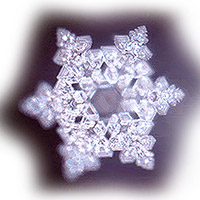The Butterfly Effect
(c) Heather Coburn Flores
Oh, Dear! Do you think Heather will forgive me for massacring her beautiful short piece on the Butterfly Effect here, which we published for her ages ago and I kept it forever. And now I made over into the …ehm…Flutter-By Effect, or better: The Heart-Flutter Effect?
Heather says here so beautifully:
Ecology teaches us that everything is connected, and that everything we do has a ripple effect on the cosmic whole. We demonstrate this principle with every seed we save, through something called “pleiotropy.” Pleiotropy occurs when multiple, often seemingly unrelated, physical effects are caused by a single altered gene or pair of altered genes.
Carol Deppe calls pleiotropy a genetic version of the ancient Taoist understanding that you cannot do just one thing. She goes on to quote Lao Tzu in saying, “The way the world works is like a bow, when you pull the string, the top comes down, the bottom comes up, and all the parts move.”
Real-life examples of the Butterfly Effect can be found in:
Oh, Dear! Do you think Heather will forgive me for massacring her beautiful short piece on the Butterfly Effect here, which we published for her ages ago and I kept it forever. And now I made over into the …ehm…Flutter-By Effect, or better: The Heart-Flutter Effect?
Heather says here so beautifully:
Ecology teaches us that everything is connected, and that everything we do has a ripple effect on the cosmic whole. We demonstrate this principle with every seed we save, through something called “pleiotropy.” Pleiotropy occurs when multiple, often seemingly unrelated, physical effects are caused by a single altered gene or pair of altered genes.
Carol Deppe calls pleiotropy a genetic version of the ancient Taoist understanding that you cannot do just one thing. She goes on to quote Lao Tzu in saying, “The way the world works is like a bow, when you pull the string, the top comes down, the bottom comes up, and all the parts move.”
- An example: A gardener saves seed from a tomato because she likes the pink color. She didn’t notice that the tomatoes with that color also have larger flowers than the rest. The larger flowers attract a certain kind of butterfly, which begins to thrive in her garden as she continues to grow the pink tomatoes. That butterfly’s larvae happen to be food for an endangered bird species, which happens to also eat a certain kind of garden pest, and so on.
Real-life examples of the Butterfly Effect can be found in:
- The weather, in which small changes in tides or winds affect global patterns;
- The stock market, where slight fluctuations in one market will send unpredictable ripples through another;
- Psychology, when thought patterns are altered significantly by tiny changes in brain chemistry or environmental stimuli;
- The natural sciences, where seemingly unexplainable phenomena continuously point back to initial conditions, such as when a plant displays characteristics that were present in a parent plant several generations back.
Related Articles
Don't let Fear and Manipulation Affect…
by Regina B. Jensen Here I am reading a letter to our local editor I wrote when I was young and beautiful! “… I was reminded of a great people who were led ..
The Gentle Art of Blessing
by Regina B. Jensen Did you ever wonder WHERE the habit of blessing people came from and what it is supposed to do, other than what a parent sa..
Hado
The study of Hado tells us that the energetic vibrations from our thoughts affect our physical realities. Walking through a Japanese garden, one truly feels the life force energy that is known as H..
Follow Your Heart
I found a lovely short and very informative article on the heart for you that I’ve had for a long time. Dear Rebecca gave us re-use permission then, and I hope she will be pleased to see it here..



